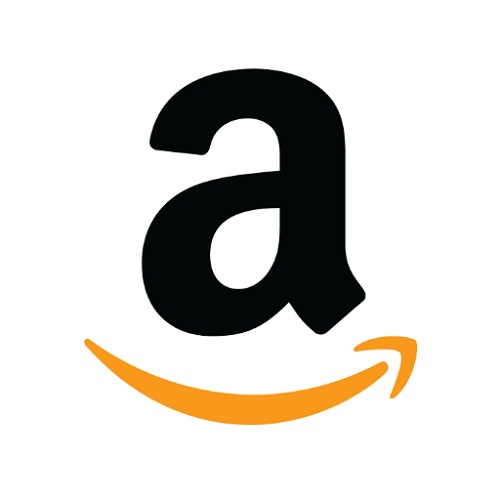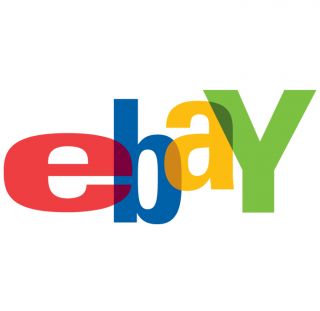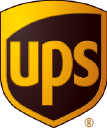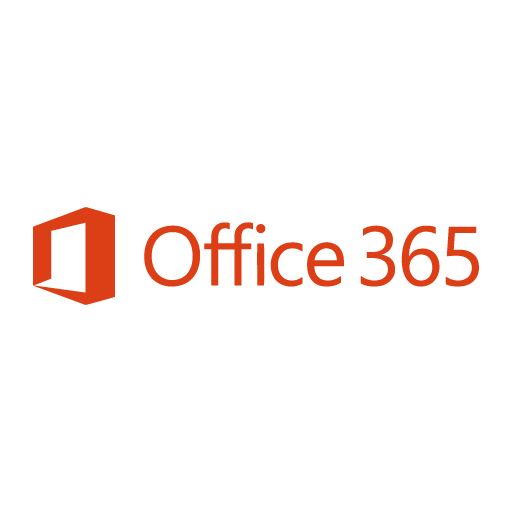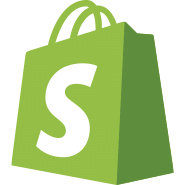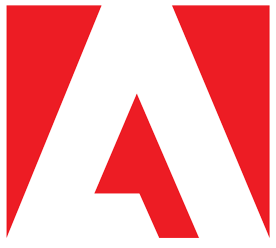We Quit Our Jobs And Are Building A $6.5K/Month Composting Business
Hello! Who are you and what business did you start?
We are Audrey & Rob Wynkoop - the husband and wife team behind the Worm Bucket Indoor Composting Kit. Rob is a 20-year veteran of the U.S. Marines who has always had a knack for entrepreneurial ideas.
We turned to backyard gardening during the pandemic to help us find a way to manage stress and we watched some youtube videos on raising worms for making our fertilizer. We looked at buying vs DIY setups and during that time Rob experimented with several different designs before coming up with our own unique bucket-style worm composter.
After much deliberation, Audrey quit her 14-year corporate job, sharpened her digital skills by building out a website, and launched our vermicomposting kit in June 2022.

Our beginner vermicomposting kit allows you to turn your food waste into a beneficial soil amendment called Worm Castings, which plants and flowers love!

Our customers are interested in living more sustainably and want to take personal action toward reducing household waste through composting. We designed the Worm Bucket for use indoors with no unpleasant smells. Its 2.5-gallon size is perfect for individuals living in apartments and condos who want to try worm composting but don’t have a lot of outdoor space. Or anyone looking for an easy solution for composting with worms. We have now launched on Amazon as well as our own Shopify store and are currently doing $6500 in monthly revenue.
What's your backstory and how did you come up with the idea?
We both love to garden and I have been experimenting with using vermicompost in our garden. When I recommended it to a family member, she said, “it sounds cool, but I live in an apartment and don’t have room.”
That was my lightbulb moment. I immediately started tinkering with various designs for a purpose-built indoor worm composter for people living in apartments.


We knew that just like her, there had to be thousands of other people who wanted to compost but had limited space. We set out to build something to fill this gap in the marketplace and make composting more accessible.
I was hoping to go after indoor composting as a niche segment in the vermicomposting market. I knew I would have very few competitors with my uniquely smaller bucket and that’s what I focused on.
At the time, we were both working mid-career, middle-class corporate jobs. We both turned 40 this year, which had us seriously reflecting on what we wanted this next decade to look like (some may call it a mid-life crisis). We felt passionate about e-commerce and sustainability and used our savings to make the first order and the concept video (about $15,000 total). We then spent another $10,000 on the website and marketing for the launch.

When our vehicles were displaced by a garage stuffed to the gills with thousands of plastic buckets, we had more of an “oh shit” moment than an “aha moment”.
At the same time, Audrey was feeling stuck and unfulfilled in her job. She wanted to try new things and like many others who seek a career change, she was told that she “lacked the right experience”. One morning I found her crying at her desk. She felt pigeon-holed and anxious about what the future held. I told her - “I think it’s time to make your move.”
After careful consideration, Audrey decided to leave her corporate job and go full-time on Worm Bucket.
It sounded crazy - so dumb in fact, it’s the same idea that Lloyd Christmas has in Dumb and Dumber! Audrey quit her six-figure paycheck to sell Worm Farms.
On the launch day, we shared our journey on Reddit and it went momentarily viral. We sold 141 Worm Buckets off that original post. It was at that moment that we said, “I think we may have something here.”
It was awesome (really awesome), but this was also our 2nd “oh shit” moment. You see, we were nowhere near being prepared for that kind of immediate response from the community. For our previous business launch, we waited days and maybe even longer for our first order. We thought the same would be true for the Worm Bucket.
We only assembled a small batch of inventory ahead of the launch. Execution mode was initiated and we worked tirelessly to fulfill those initial orders. We ran out of supplies and had to wait weeks for some components to fulfill all the orders. This experience taught us 2 lessons in supply chain management- understanding lead times and not having a single source for components. Especially amid a global supply chain crisis. It was nerve-wracking.

Take us through the process of building the first version of your product.
The first thing I did was research my competitor's products and which ones were selling well. I used some Amazon analytics tools that told me that the niche was big enough to support decent sales if I had a good product.

I read every product review and took notes of all the problems and complaints people had. Things like “too heavy when full” or “made of brittle plastic and can’t withstand sunlight” were common among a variety of existing manufacturers. I then started to iterate designs that would eliminate these concerns and do so at a margin that was high enough to sustain PPC expenses.
I follow the whole product design on Reddit in this post.
We also did a lot of intentional things that focused on reducing waste. Like designing our product packaging to be completely compostable. Our customer doesn’t want a bunch of single-use plastic in their order, they don’t want styrofoam. We thought through that and designed packaging that has a natural vibe and can be shredded and completely consumed by the worms in the Worm Bucket.
Even the smallest details like the stickers to seal the bags and tape, can all be composted and fed to the worms. We are proud of this and hope to inspire others to be more intentional about the environmental impacts of business decisions.

Describe the process of launching the business.
I had a few months before our product would arrive from overseas, so we set about refining the basic website we had thrown together at the start. We used Shopify to build the first iteration of the site. I spent $3,000 to hire a copywriter, but we laid it out ourselves. We bought a simple paid theme and added only a few apps from the Shopify app store.
Initially, we thought we were going to launch it on Kickstarter, but after some feedback from some Kickstarter marketing consultants, we just decided to skip that step and self-fund the product launch and run the business on our domain.


This was only after failing in our original plan which was to sell on Amazon. We had always wanted to build this business around Amazon, but we have had terrible luck with even getting approved to sell on the platform. (Amazon is constantly asking us to verify our IDs or business documentation and it always seems to knock us offline for a time.) It’s been a major time suck and a waste of money for us.
We even paid Amazon-affiliated trademark attorneys to try and grease the skids so to speak to get our Brand Registry application through processing. Unfortunately, we were also unsuccessful there and were denied Brand Registry for our original product. Go figure. There’s also never a real human to talk to on the other side. So after spinning our wheels with Amazon, we just pushed ahead with our domain.
I decided to start building out our SEO strategy, so I worked with some freelancers to create about 40 unique, high-quality blog posts. We also built a pretty standard newsletter opt-in and started an email marketing flow. We also created a few digital products to give away.

I used Fiverr to create a cool animated video that we had planned to pay to promote on Youtube and Facebook. The video turned out great and helped us educate the market and create interest in composting.
Vermicomposting is gaining popularity but is in no way mainstream so education is a big part of our customer conversion strategy. Ultimately, it became too expensive to pay to show the video to people. It now sits prominently on our homepage. I ended up paying about $2500 for this animation.
You can see here, we spent almost $700 promoting the video on Youtube pre-roll ads and didn’t get a single conversion! YIKES!

From the beginning, a big thing I did was employ the strategy of building in the open. I like Reddit and so I decided to chronicle my iterative process on one of the Entrepreneur subreddits. I made many of these posts and honestly some of them got no traction whatsoever.
However, I will attribute these “Business Ride-Along” posts to making some of our later posts go viral.

Nurturing the narrative of our brand over many months and on different channels helped us when we went for bigger organic campaigns like our Reddit AMA. There were already at least a few people who had heard at least parts of our story. This led to good engagement in the comments and eventually another nearly 1 million Reddit post views!
Since launch, what has worked to attract and retain customers?
Our most predictable sales channel has been Google Shopping by far. We have tried a bunch of things over the last year and they’ve all had various levels of success, but reliably and profitably it has been Google Shopping by a mile.
We’ve sold 550+ units in just 6 months and we’ve made back our original start-up costs.
YouTube is by far our best-performing organic channel, but it’s exhausting and very time-consuming. There are many times when Audrey will work for hours and make a very good video that gets shown to a few hundred people only.
Social posts don’t always get a lot of replays so it’s kind of disheartening. It’s like you work super hard to create content, it gets shown to a couple of hundred people and then it’s dead. It doesn’t continue to get views really and you have to constantly create new digital content. It’s so exhausting, to be honest.
Audrey handles all of the digital creation. That means she’s writing, shooting, acting in, and editing videos and making content for Youtube, Facebook, and Instagram Reels. I was unprepared for just how big of an undertaking running a social media brand would be. I have a newfound admiration for all the social media teams out there.
It can be very disheartening to shoot, edit and try and promote video content only for it to get zero reaches. I admire Audrey for being able to persevere and keep putting out videos even when you feel like they’re going nowhere sometimes.
Here’s an Instagram reel that highlights the care and effort she’s putting into our content:
Audrey also built out our affiliate program, using Shopify Collabs and UpPromote. Currently, there are 29 registered Worm Bucket affiliate partners. However, we have not seen a lot of conversions, usually no more than a 5/month. Commissions are set at 10%, which makes each sale worth $5.90. It seems difficult to make the affiliate model work with our niche market and at our product price point.
We used giveaways to start-up influencers, with 5K> followers as another organic strategy. It worked well as a feedback loop for us and probably was one of the things that kept us going. Person after person who tried it loved it. We started getting people reaching out, looking to partner with us.
One of those exciting examples is the town of Canaan Falls, CT reached out in a crisis. Their municipal landfill was at capacity. They needed to take immediate action to divertanyl food waste away. It was awesome to see them taking action to make composting available to everyone in their town. They even linked the Worm Bucket to their transfer station resource page under “Indoor Worm Composting.” It was then we thought we were about to go big! There were no conversions.
Transfer Station | Canaan / Falls Village, CT (canaanfallsvillage.org)
We’ve put out a little bit of content on our Youtube channel regarding how to set up the product and how to troubleshoot problems with your Worm Bin. That has had some organic success for us.

Our product is not something for everyone, so we know that affects conversions, but we need to get to 5-10 sales per day where we are usually consistently at 2-4 sales per day.
I would say the main game plan though regardless of the channel is to lead them back to the website and get on our Worm Composting Guide email list.
We re-packaged the blog posts we had done into an easy-to-understand email series to try and warm folks up to the crazy idea of keeping worms inside their house.
We use Klayvio and cart-recovery strategies with this list and we’ve honestly improved our conversions quite a bit over time just little by making tweaks.
The conversion rate is still abysmal in my mind, but again we’re convincing people to keep buckets of worms under their kitchen cabinets, so I expect the conversions to be low. Our initial conversion rate was around .64% which is significantly worse than typically quoted e-commerce industry averages.
We worked on improving the website copy and aesthetics more and added some additional features like a paid Shopify theme, BoldUpsells, and improving the emails we send within Klayvio. We also added a partner who can dropship composting worms for us which has made our site now an all-in-one place to order a Worm Farm Kit and the Worms to go with it. This partnership also increased our average cart size as well.
This did improve our conversions overall and now we are sitting around a 1.3% conversion rate. It’s still pretty terrible, but we are profitable on our ad spend. The average cost per click is $.74.
Right now my cost per conversion with google ads is quite high at around $24. But this still leaves me $10 per unit in profit. The product has a 70% gross margin at its present scale.

How are you doing today and what does the future look like?
Things are exciting and worrisome at the same time. Worrisome because my original numbers estimates don’t seem to be holding up with this product. For example, I expected about 60,000 monthly searches for my product based on the google keyword research we had done. I am only about to capture about 5,000 visitors a month right now, so this has impacted us. For example, I have my Google PMAX ads set to spend $120 per day but it only actually spends around $25-40 per day.
We had originally saved enough money to have Audrey step away from her corporate job for about 3-4 months, we’re now on month 7. When we got to the end of the savings and sales were not totally where they needed to be to support Audrey’s full-time commitment, we had to cut some expenses like cable tv subscriptions and started cooking at home more.
Audrey took a part-time seasonal job to fill in a couple of gaps financially but it has not been a super comfortable time for us financially. There are a lot of considerations besides just income. Although we are nurturing this business, it still doesn’t make a lot of money yet. Audrey also isn’t able to contribute to her 401K and overall being full-time in the business is an additional stressor until revenues improve.
Audrey loves having the flexibility of running Worm Bucket though, being in control of her destiny. She also loves being able to play tennis a few days a week - something she never could find the time to do when she was working the corporate grind. Making that small change, she’s excited to have lost 15 lbs.
She’s also not crying at her desk anymore. Well except for that one time when we had a particularly bad string of getting very few views on our Instagram reels.
On that - make sure to make some mental health checks on yourself or your team. Trying to compete for attention on social media can be demoralizing when it’s not going well and your livelihood is at stake.
When we caught ourselves at the crying stage over the number of views our posts were getting we had to have a family conversation about what was important to us and this business. Social media didn’t make that list, but either way, these talks aren’t easy. Should she go back to the corporate job? They’re begging her back, but our dream is at stake!
We were looking Q4 in the face but were pretty much out of the money we had set aside for this, but we needed to see where things stood with Worm Bucket as a Christmas present in the market. Would we get holiday sales? I think we did not get a huge uptick in sales as we had hoped but kind of trudged along as we have done.
In the end, our product is weird. It’s not something for everyone, so we know that affects conversions, but we need to get to 5-10 sales per day where we are usually consistently at 2-4 sales per day.
We really put a lot of our eggs into the Amazon basket early on and we just were never able to get that going before the Christmas season and therefore did no sales on that channel this year.
We believe in the Worm Bucket and are hopeful more people will begin to understand the important role composting plays in our global food supply. We’re excited to see the day a bucket of worms in your house is no longer weird, it’s the norm!

I’m optimistic that we will solve our Amazon woes in 2023 and that we’ll be able to pick up another 2-5 sales per day through them. In January 2023, we were officially Brand Registered with Amazon and are seeing sales of more than $2,000 through the Amazon channel it’s still the dead of winter, so we have a lot of optimism for the spring. We’ve also added Walmart.com as a channel and sell maybe 1 per week through that site.
I think the positives are we have a cool product and we’re selling them for a profit. We’ve sold more than 700 units since launch and we’ve made back our original start-up costs. The downside is we haven’t come close to replacing Audrey’s previous six-figure income and that honestly might not happen for a while.

The other thing is the feedback - it’s been overwhelmingly positive. Customers really like the small design and those that understand vermicomposting have given us positive reviews we’ve also recruited about 6-8 passionate affiliates who are sharing videos about vermicomposting with their Worm Buckets.

Audrey has branched out and recently led a vermicomposting class at her former employer and we think giving composting webinars and how-to training to corporate audiences might be a cool, under-the-radar way to get our message out there.

Through starting the business, have you learned anything particularly helpful or advantageous?
One thing I think I’ve learned in this business is that cash is king. A lot of e-commerce guru types will tell you that all you need is a credit card and you can build an e-commerce business for millions.
It’s really hard to build out a working site that gets sales first of all and second of all credit card interest is constantly working against you and killing your margins. If you want to take and max out a credit card for your unproven product, you may end up with a garage full of unsellable products that you’re paying 25% interest on.
You may think “business credit card” and you can start charging things like ads or buying software subscriptions left and right and your monthly costs can balloon and start to gnaw at both your business’s financial health but also on your mental health. There was a time when I knew some of my ads were bad and costing me money, but I just put on blinders and refused to look at the data. This cost me hundreds per month for several months before I finally confronted myself about the situation.
We are having to kind of scale back on ads a bit and make sure all the marketing we do is profitable from the start. We try to avoid losses when testing adsets, etc., because we just cannot afford to lose money on bad ad spending right now.
Many times I was having to dip into personal savings to fill the business coffers to pay for various bills, and when you’re doing that down on one income from two, it hits doubly hard. We had to get much more disciplined with our finances both in our personal lives and in the business to keep focused and allow Audrey to stay full-time in the business.
What platform/tools do you use for your business?
Audrey is a wizard with Canva. We have the full professional version which gives us access to stock photography, video, royalty-free music, and more. We also have Adobe Premiere for some of our video editing.
The site itself is powered by Shopify. We use email marketing from Klayvio and also the BoldUpsell app.
We’re using Printful for some print-on-demand t-shirts we’re selling on the site as well.
We also use Rewind for Shopify Backups. "ALWAYS PAY FOR AND CHECK FOR YOUR SITE BACKUPS!"
Do not spend months or perhaps years of your life tweaking and improving your website to somehow screw it up and realize that you don’t have a native backup included with your Shopify or e-commerce solution. Just pay for the backups - even if you think you’re too small to need them.
What have been the most influential books, podcasts, or other resources?
Think and Grow Rich - It’s an important book for entrepreneurs. Perhaps it’s exaggerated, perhaps it’s not all true, but if you read it and don’t come away inspired, something is wrong with you.
4-Hour Work Week - The idea of building a lifestyle business has been in my head from the moment I read this book by Tim Ferris about his brain supplements product website and the absolute freedom it allowed him in life. This has been my aspirational goal since the moment I first read it around 2010.
The UnOfficial Shopify Podcast - this is a real nuts and bolts podcast about running a $1M+ revenue Shopify store. They taught me tons about improving my email marketing flow as well as upsells and cross-selling on my Shopify store.
Advice for other entrepreneurs who want to get started or are just starting out?
Just start. I (Rob) started messing with side hustles more than 20 years ago. The projects I worked on then look nothing like what I’m doing now, but it’s been the hundreds of little lessons from building blogs, affiliate marketing sites, flipping on eBay, etc., that have set me up for success.
Over time that chain of small failures has given me the confidence to launch something like this. It’s led me to a point where I can make a $30,000 bet on myself for something as weird as Worm Farms and still manage to break even in the first 6 months.
Are you looking to hire for certain positions right now?
Not at this time. Audrey has things well at hand and I pitch in to help in my evenings and weekends right now. We are always looking to learn more about SEO and digital marketing, but we don’t have marketing budgets to pay consultants or hire new employees at the moment.
We are always recruiting passionate affiliate partners who want to try out vermicomposting and post about their journey on social media.
Where can we go to learn more?
- Website
- Follow Rob on Twitter
- Watch Audrey’s awesome Instagram gardening content
- Tiktok
If you have any questions or comments, drop a comment below!

Download the report and join our email newsletter packed with business ideas and money-making opportunities, backed by real-life case studies.

Download the report and join our email newsletter packed with business ideas and money-making opportunities, backed by real-life case studies.

Download the report and join our email newsletter packed with business ideas and money-making opportunities, backed by real-life case studies.

Download the report and join our email newsletter packed with business ideas and money-making opportunities, backed by real-life case studies.

Download the report and join our email newsletter packed with business ideas and money-making opportunities, backed by real-life case studies.

Download the report and join our email newsletter packed with business ideas and money-making opportunities, backed by real-life case studies.

Download the report and join our email newsletter packed with business ideas and money-making opportunities, backed by real-life case studies.

Download the report and join our email newsletter packed with business ideas and money-making opportunities, backed by real-life case studies.

